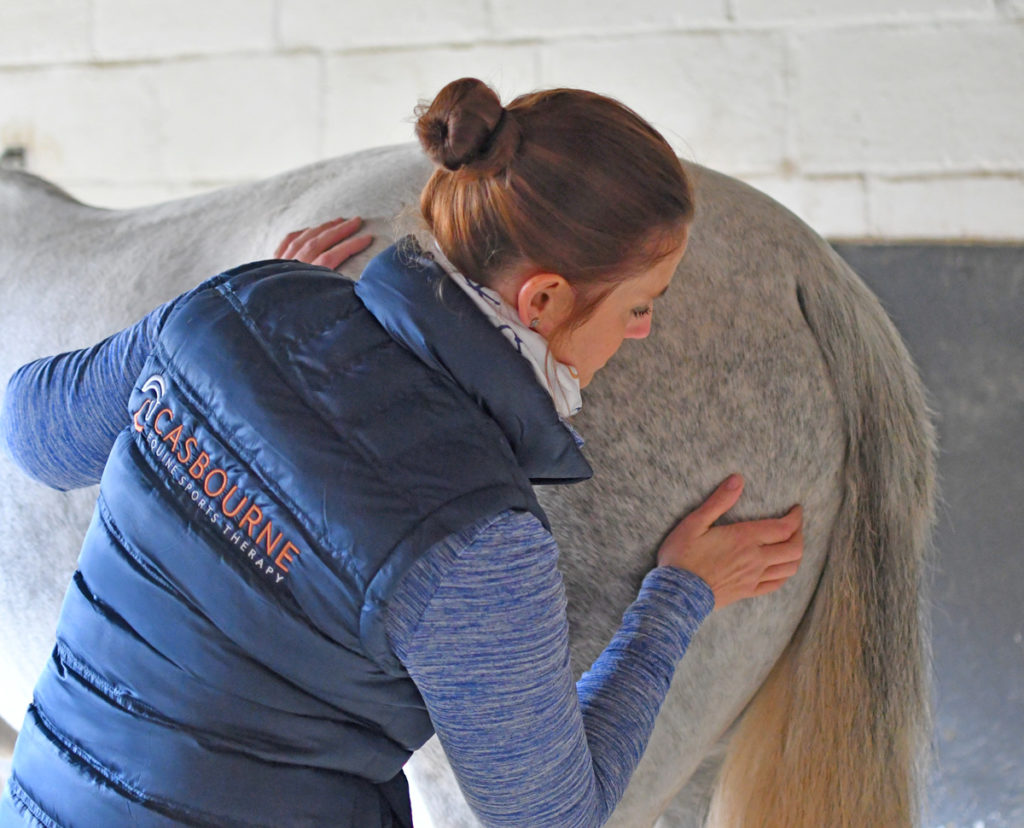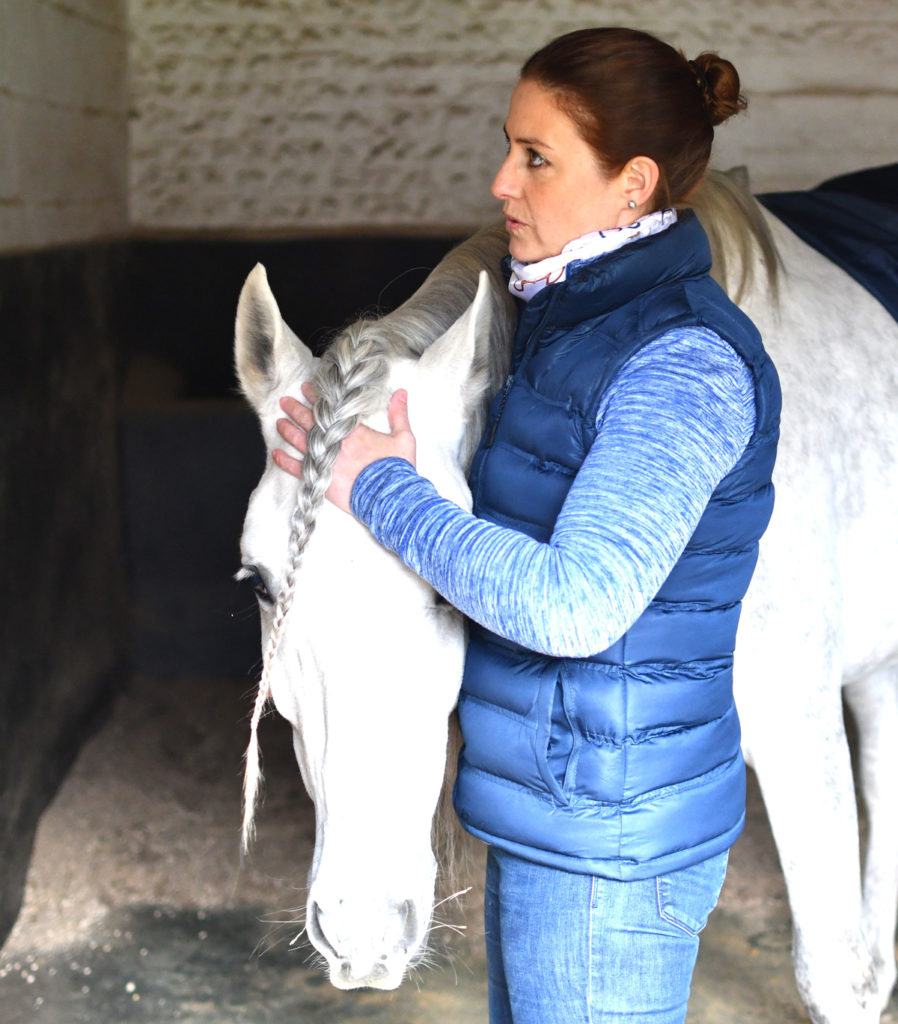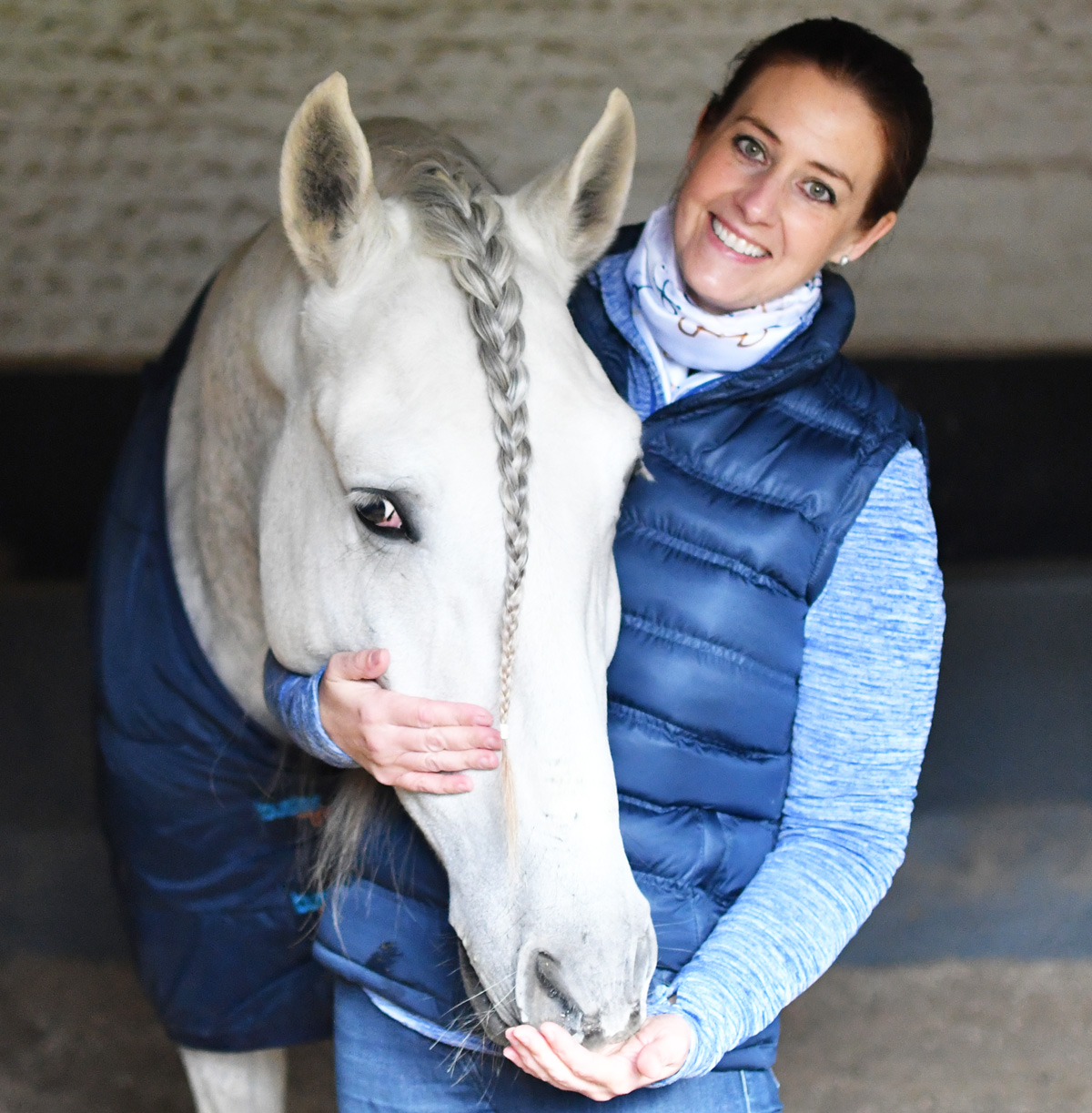Photos: LRG Photography
Location: The Classical Riding Academy, Molecomb Stud, Goodwood, United Kingdom
Horses have been my life, but not always my work. The 12 years I spent in the U.S. were formative and life changing. I unwittingly arrived wide-eyed and, frankly, clueless at corporate life. During this time, horses were still very much a feature in my life. I spent what time I could riding and later working around horses, first in a hunter-jumper barn and then for several years in a private classical dressage barn. Stepping into the classical world was a turning point for me and opened a whole other world of horsemanship: the biomechanics of the horse and rider, timing of aids, handling and riding stallions, the benefits of complementary therapies, and the well-being, management, and training of the horse as an individual—from leisure to grand prix. I gained an appreciation of the vast difference teamwork and a supportive and encouraging environment can make to both the horse and rider. It is this philosophy that I strive to apply to my work with horses and their owners.
I returned to the U.K. in 2004 with my Thoroughbred and five other horses as an in-flight groom flying across the Atlantic.
My work as an Equine Sports Therapy Practitioner with Casbourne Equine has led me across the U.K. and abroad, from two-horse barns to the 46-horse barn; from youngsters to retirees; from leisure to racehorses in-training, with much of my work around stallions, Thoroughbreds, PREs, and those seen as ‘problems.’
Against many odds and a few meanderings, I found my niche in life.
What is Equine Sports Therapy?
Would you turn the page if I talk about the Rectus Capitis muscles or the Brachiocephalicus muscle? But what if I speak about improving stride length; impulsion; performance? Have I captured your attention? A horse whose body is in balance will move with freedom, and therefore performs at its best. Complementary therapies, in this case Sports Therapy, have been around for hundreds, if not thousands of years, and have proven helpful in reducing the chances of musculoskeletal imbalances or injuries. Until recently, our western culture made us susceptible to viewing these therapies as nonsense, but they are fast becoming a fundamental part of caring for the equine athlete, from competition to leisure to retirees.
The equine body is a perfectly balanced work of art. But what happens when the balance is tipped or altered in some way? Muscle spasms are a pain response; muscle atrophy is a muscle in dysfunction. A tight muscle shortens, and a shortened muscle loses range of motion, putting a strain on the tendon that it is attached to as well as the joint which may cause joint inflammation and subluxation (partial dislocation). The same happens when muscles become fatigued or overworked. Muscles work in groups and chains, and when a muscle is out of action, others work harder to keep the group functioning. Then the body enters a cycle of fatigue, impaired function, and circulation resulting in compensatory patterns. In essence, the dysfunction of a single muscle can have a cumulative, large-scale impact on the entire body—not just a single muscle—leading to possible injury, strain, altered posture, change in behavior, or loss of performance. When injury, strain or pathology occurs, the body will rescue itself in whatever way it can, and, as we all know, horses are masters of compensation.

Tension through the jaw and poll? Tight muscles? Uneven shoulders? Rotated ribcage or pelvis? Tilted head? Sudden spookiness? If the head is unlevel, then the eyes and the neurological input is altered. Now apply some of those examples to the comfort of your horse and the affect they would have on your horses’ performance. What would it mean in terms of stride length, impulsion, jumping, lateral movement, right rein vs. left rein, canter leads, circles, self-carriage, walking downhill….the list is endless. How can muscle develop evenly and correctly if the body is misaligned or forced into a position? How can an equine be comfortable when its muscles are burning, in contraction, and/or spasm? How can they be expected to do what is asked, if they are physically incapable of doing so?
Force and obstruction break the perfect biomechanics of the body.
Equines are no different from us: when you release pain and tension, you allow the entire body to rebalance and function fluidly; you give it the opportunity to move with ease and therefore to the best of its ability.

‘Tension is counterproductive to effective balance and the harmony of free movement.’ TM
Posture can be changed but conformation cannot, and these two elements should never be confused. Sports Therapy may prevent and alter patterns of compensation by addressing alignment, muscle memory, tone and elasticity, connective tissue, and the equine system globally. Sports Therapy may hasten healing of the muscle fibers, decrease nerve entrapment, reduce nerve-root compression caused by muscle tension, and stimulate nerves to help rejuvenate an injured part of the body. Stimulation of the nerve receptors have reflex reactions affecting the vasomotor nerves, visceral (internal) organs, pain perception nerves, and the underlying joints and muscles of the areas being treated. Change happens on a cellular level. Given what we ask of our horses, it makes perfect sense to have complementary therapies as part of the care of our horses.

When working with a sports therapist, remember that every horse is unique, and therefore sessions should always be individualized to that horse. It may take several sessions before the body starts to localize to your primary and secondary sites. There may be crossovers in types of treatment. In addition to massage, I may incorporate cranial therapy, myofascial release, trigger point therapy, Reiki, and positional releases and stretching. But a practitioner’s approach should never stop at the horse. There is often a larger environmental picture at play, and making a commitment to change requires a team effort.
Tradition and experience should never prevent us from continually learning and exploring possibilities to further understand our approach of the care and training of the horse. After-all, we make every decision for them, so prevention is the best protection.


